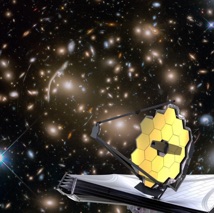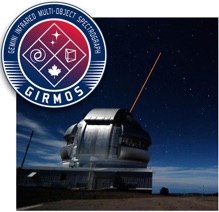
RESEARCH
Our team studies the formation and evolution of galaxies at epochs when the Universe was only a fraction of its present age and we do so using the most powerful telescopes in space (JWST, HST, Spitzer, Euclid) and on the ground (Subaru, CFHT, and Gemini).
KEY PROJECTS
-
‣ JWST CANUCS:

-
‣ DEEP wide-area imaging: DEUS and CLAUDS

DEUS builds on CFHT Large Area U-band Deep Survey (CLAUDS), which is a very deep U-band imaging survey that overlaps with the Subaru Hyper Suprime-Cam (HSC) survey Deep/UltraDeep fields. The CLAUDS data (68 dedicated CFHT dark-time nights plus archival data) are all in hand, as are the Subaru observations. We are using these joint catalogs for a large range of scientific applications, from detailed galaxy evolutions studies over 0<z<1, to assembling large samples of galaxies, quasars and proto-clusters at z~2-3. We are working on many of these topics, and have published over 20 papers on them already, with many more in preparation.
-
‣ GIRMOS:

GIRMOS (Gemini InfraRed Multi-Object Spectrograph) is a next-generation instrument that we are building for the Gemini-North 8-metre telescope in Hawai`i. When it is deployed in 2027, GIRMOS will have the ability to take spatially-resolved spectra of four targets at once with light fed to it by Gemini’s new state-of-the-art GNAO adaptive optics system now also under construction as the largest component of Gemini’s GEMMA program. GIRMOS will target high-redshift (1 < z < 10) galaxies in order to study their formation and evolution, back to a time when galaxies were first forming and through to Cosmic Noon. GIRMOS will also study star-formation physics within the Milky Way Galaxy and do near-field cosmology through the study of metal-poor stars in the Milky Way’s central bulge. I am leading the team that’s developing the GIRMOS data reduction software and we look forward to using GIRMOS when it goes on the sky in 2027!
SELECTED RECENT PUBLICATIONS
-
•ΛCDM not dead yet (Desprez, Martis, Asada, Sawicki, et al. 2023)
-
•Bursty star formation and galaxy-galaxy interactions 1 Gyr after the Big Bang (Asada, Sawicki, et al. 2023b)
-
•JWST catches the assembly of a z~5 ultra-low-mass galaxy (Asada, Sawicki, et al. 2023a)
-
•First large catalogue of spectroscopic redshifts in JWST’s First Deep Field (Noirot, Desprez, Asada, Sawicki et al. 2023)
-
•CLAUDS catalogs (Desprez et al. 2023)
-
•Across the green valley with HST grisms (Noirot, Sawicki, et al. 2022)
-
•Ionizing radiation from z>3 AGN (Iwata, Sawicki, et al. 2021)
-
•Star/galaxy classification with XGboost (Golob, Sawicki, et al. 2021)
-
•UV luminosity functions since z~3 with 4 million galaxies in CLAUDS+HSC (Moutard, Sawicki, et al. 2020)
-
•The CLAUDS project (Sawicki et al. 2019)
-
➡ See here for my full publication list: Google Scholar and SAO/NASA ADS
